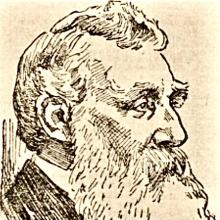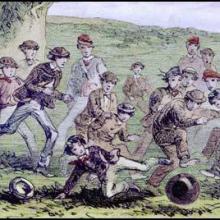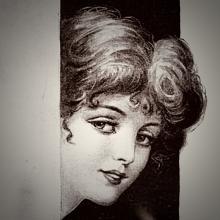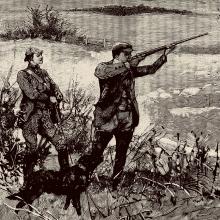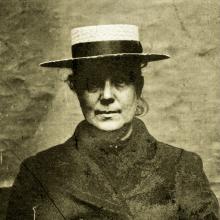
A CONTUMACIOUS PRISONER.
A woman named Elizabeth Igo was brought to the bar of Edinburgh Police Court to-day, charged with being drunk and disorderly in West Register Street last night. She pleaded guilty, and 57 previous convictions were libelled against her.
Sheriff Guy said: I wish you could suggest some punishment that would make you better. The prisoner asked for another chance, and the Sheriff pointed out that she had got 57 chances already. He imposed a sentence of twenty-one days’ imprisonment.
Prisoner (leaving the bar)—That won’t make me better, anyway.
Edinburgh Evening News, 8 July 1904[1]
[1] Image: Tyne & Wear Archives and Museums.
*****
OWNER GIVING UP, thick-set harness horse, 16 hands; 6 yrs, £26; cob, 14.3, 6 years, £13; suit undertakers, postmasters, or others; good for journeys; any trial allowed; above warranted sound.—16 Lennox Street Lane, near Dean Bridge, Edinburgh.[2]
Edinburgh Evening News, 13 July 1904
[2] The term ‘cob’ appears frequently. It means a powerfully built horse with short legs.
*****
EDINBURGH LABOURERS ASSAULT POLICEMAN.
Two labourers, named James Cox, residing in Simpson’s Court, Edinburgh, and Joseph GiIhooley, Little King Street, appeared at the Edinburgh Burgh Court, charged with assaulting Constable Findlay in Simpson’s Court yesterday, striking him on the face with their fists and throwing him down. Both pleaded guilty, and Bailie M’Michael imposed sentence of 40 days’ imprisonment. Cox had been previously convicted three times, and Gilhooley four times.
Edinburgh Evening News, 21 July 1904
*****
MOTOR CAR ACCIDENT IN EDINBURGH.
Before the Lord Justice-Clerk and a jury to-day, there was tried an action by George Macandrew, journeyman painter, Nottingham Place, Leith Street, Edinburgh, against the New Rossleigh Cycle and Motor Company, Ltd., 5 North Charlotte Street, for £250 damages for injuries received on 6th August last through being knocked down by a motor car belonging to the defenders.[3]
The pursuer stated that he was running to a tramway car near the terminus at Goldenacre when the defenders’ motor car came up behind at a rapid rate, struck him violently on the back, knocked him down, and ran over him.
The defenders denied fault. They explained that the motor car was proceeding at a slow rate round the corner at Goldenacre, when the pursuer instead of boarding the tramway car and without looking to see what traffic was coming up behind or paying any attention to the horn which the driver of the motor car sounded, attempted to gain the pavement, with the result that he collided with the motor car.
The jury returned a unanimous verdict for the defenders.
Edinburgh Evening News, 22 July 1904
[3] £250 is equivalent to about £19,640 today, or roughly two years’ wages for a skiled tradesman in 1904.
*****
MODEL YACHT (schooner).—Apply 6 Albany Lane, 6.30pm.
Edinburgh Evening News, 16 September 1904
*****
UP-TO-DATE PARCEL EXPRESS DELIVERY FOR EDINBURGH.
Commencing on 3d October, the Edinburgh and District Tramways Company are to inaugurate a quick parcel express delivery, and for this purpose central premises have been secured at 5 and 7 West Register Street.
A person wishing to send a parcel must see that the company’s label is attached, as all parcels must be prepaid. The parcel is then handed to the conductor of any car going in the direction of Princes Street or General Post Office at any of the stopping places. The conductor, after receiving the parcel, will give a ticket receipt indicating that the parcel has been received. The parcel will then be collected by employees of the company at St Andrew Street and North Bridge and taken from these points to the Central Office in West Register Street, and dispatched immediately therefrom to their destinations.
The tramway authorities in Manchester and Bradford have recently appointed Parcel Superintendents to conduct an extensive parcel express business, and the system of parcel express has been in operation in Dublin for many years.
As an illustration of how the business will be worked, it may be stated that if a merchant dispatches say ten parcels at six o’clock in the evening to ten different parts of the city, all the parcels will reach their destinations that evening.
Edinburgh Evening News, 2 September 1904
*****
EDINBURGH THIEF SENT FORTY DAYS TO PRISON—Robert Ross, residing in Queen’s Place, Greenside, Edinburgh, pleaded guilty at the Edinburgh Burgh Court to-day to a charge of stealing a leather bag and £11 17s on the 4th inst. He had been previously convicted of theft on four occasions, and Bailie Cameron, who presided, sentenced him to 40 days’ imprisonment.[4]
Edinburgh Evening News, 23 September 1904
[4] Ross was first convicted for theft in Aug. 1903, According to EEN, on 30.7.04 he was sentenced to 21 days’ imprisonment for the theft of 1.25 hundredweight of lead from the roof of St Mary’s Roman Catholic Cathedral. See also EEN (12.12.04).
*****
NEW SYSTEM OF FIRE ALARMS IN EDINBURGH.
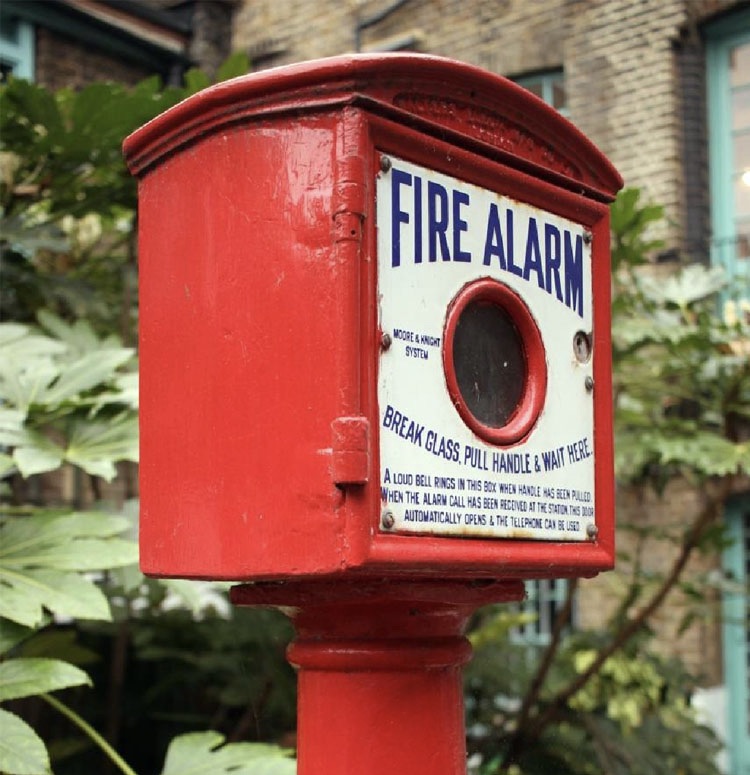
Edinburgh is now being equipped with an improved system of fire alarms, the chief merits of which are its directness and simplicity of communication with the Central Station of the Fire Brigade.
Mr Pordage, the firemaster, to-day explained the system to a representative of the “News.” The metal box, which contains the apparatus, measures 20 inches in height and 15 inches in width. It can be erected against a wall in a conspicuous position or attached to a lamppost. The printed tablet upon the box explains the method of using the apparatus.
The instructions are as follows: “In case of fire or serious accident break the glass, turn the handle, and pull open the door, lift the telephone and wait for reply. Then state nature of accident, number of house, and name of street. Speak slowly and distinctly; when finished replace the telephone and close the door.”
A little square of glass in the front of the box keeps back the spring handle, which, of course, bounds outwards whenever the glass is broken. By turning the handle the door of the box is opened, and the rest of the business is just like speaking through an ordinary telephone, with this difference that the “call” goes direct to the fire station in Lauriston Plaoe. As soon as the informer lifts the transmitter from its rack in the box, an indicator falls at the fire station switchboard, and sets a bell ringing.
One great advantage of the system is that the brigade are advised of the exact location of the outbreak, and have not, as is the case in Glasgow, to go first to the point from which the alarm came to ascertain their destination. The system also affords more protection against false alarms as before he could turn out the brigade the deceiver would have to deliberately supply information regarding the locality and the nature of the outbreak.
The alarm boxes will be placed about four feet from the ground so that they will be easily accessible. The work of preparing and fitting up the alarms is being done by Mr Pordage’s men in their workshops. They receive the rough casts of the boxes and do all the internal adjustment themselves.
The following spots have been selected meantime for the erection of the alarms: The corner of Little King Street (near Theatre Royal), Ainslie Place (on the garden railings), the foot of Bell’s Brae, Water of Leith; at Brandon Terrace, Canonmills; Gosford Place, Ferry Road; at Merchiston Avenue; the West End of Colinton Road, the Craighouse end of Morningside Drive, at Blackford railway station, and at Baileyfield Road, Portobello, near the railway station— ten points altogether.
Edinburgh Evening News, 30 September 1904[5]
[5] Image: Graces Guide, accessed 31.12.20.
*****
JUVENILE DEPRAVITY IN EDINBURGH.
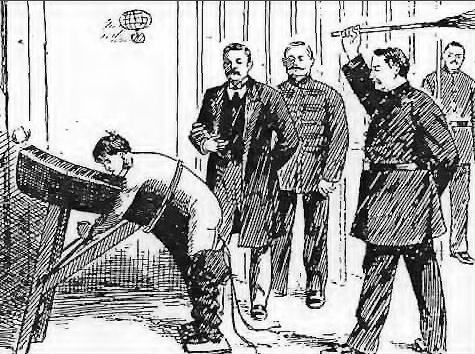
Quite a batch of youthful thieves were dealt with in Edinburgh Sheriff Summary Court to-day.
Thomas Smibert, Michael Donigan, and John Baird were all charged with three acts of theft from premises in Scotland Street Lane, the articles taken including a box of sweets, a wrench, 2s worth of chocolate, a cup, and threepence. They pleaded guilty.
Smibert, who had been several times previously convicted, was sent to jail for 30 days, Sheriff Orphoot remarking that he was evidently leader of the company. Donigan, who had also been in trouble before, was ordered to receive 10 stripes with the birch rod, and Baird, whose first offence it was, was given the benefit of the First Offenders Act. William Millar and William Stobbie, other two small boys, both of whom had been previously convicted, pleaded guilty to the theft of 14s, 11½d, 26 ounces of tobacco, a box, and 50 packets of cigarettes, and some chocolate. Miliar was ordered to receive 10 stripes with the birch rod, and Stobbie six stripes.[6]
Edinburgh Evening News, 4 October 1904
[6] Image: Spanking Art, accessed 19.12.20.
*****
YOUTH.—Charles Jenner & Company require an active youth, about 18 years of age, as lift attendant. Apply Rose Street Lane entrance this evening, between 5 and 6 o’clock.
Edinburgh Evening News, 6 October 1904
*****

At SOUTH-EAST ROSE STREET LANE
(between Hanover Street and St David Street),
On Saturday, 29th October 1904, at One o’clock.
AZALEAS, BEAUTIFUL RHODODENDRONS,
SPIREA, ROSES IN DWARF and STANDARD,
Retinosporas, Cupressus, Scubas, Hydrangeas,
Mulberries, Sirings, Apple Trees, &c, &c.
In Fine Condition for Planting Now.
Scotsman, 22 October 1904
[7] Image: Wikipedia, Creative Commons, accessed 19.5.21.
